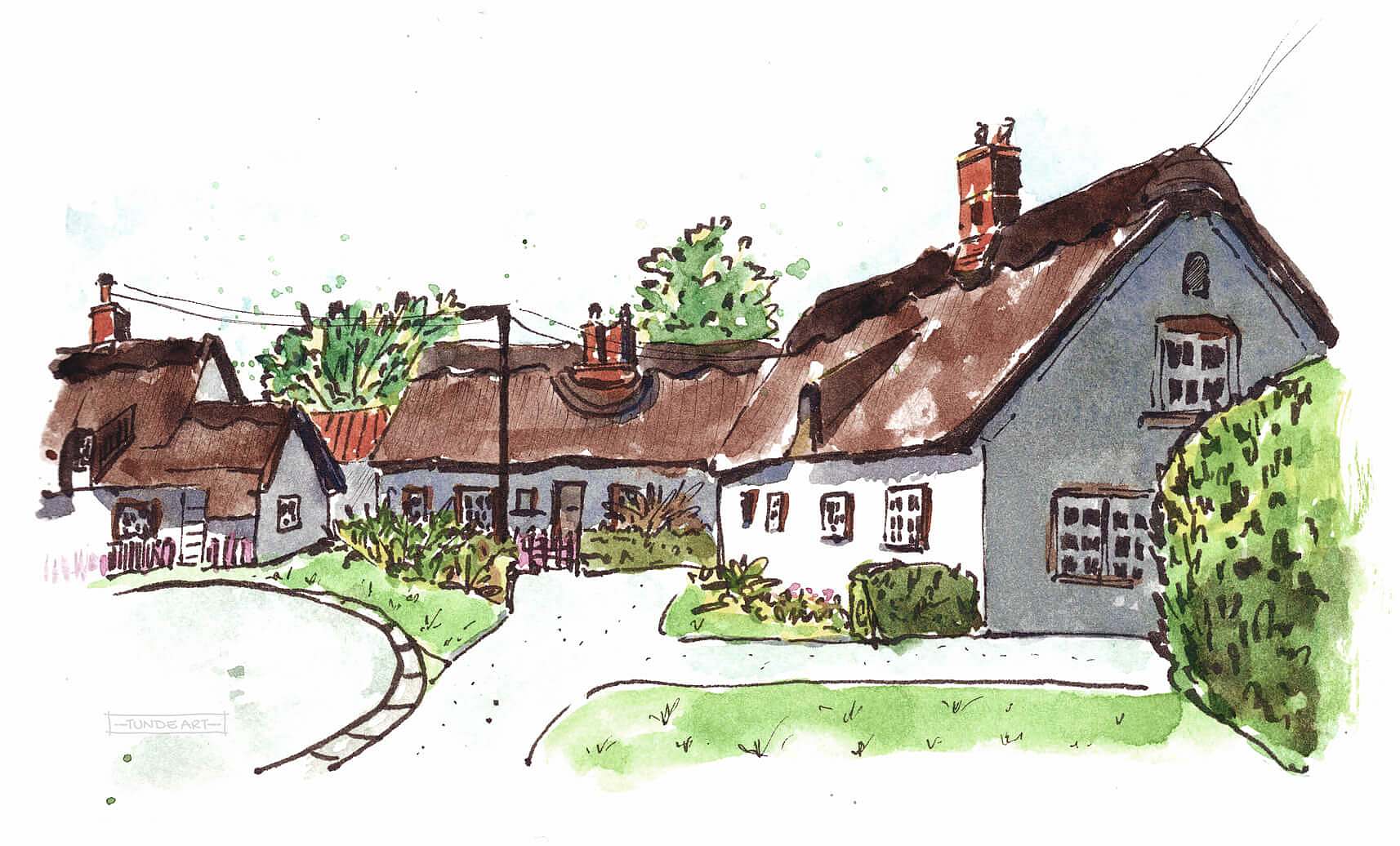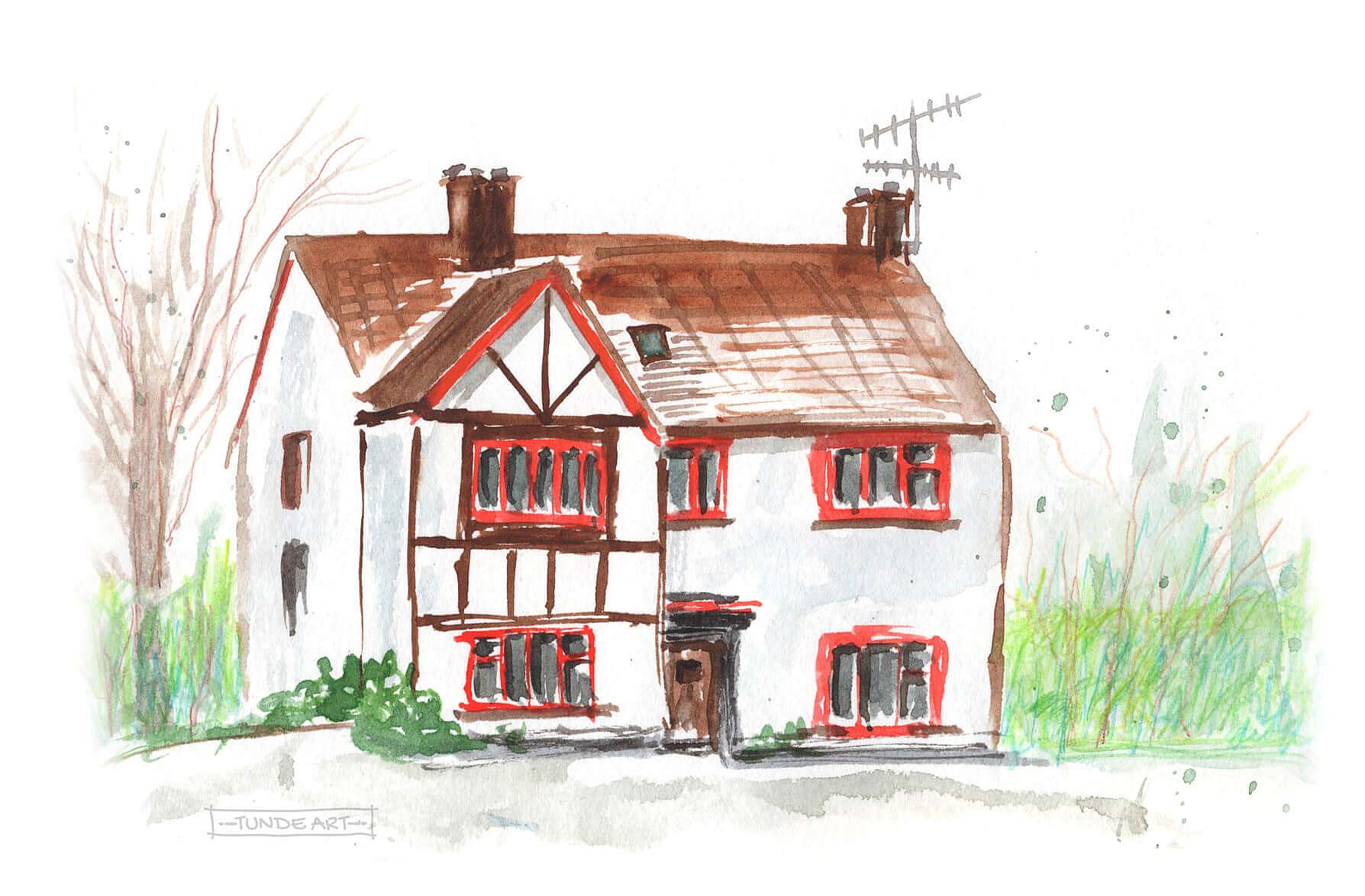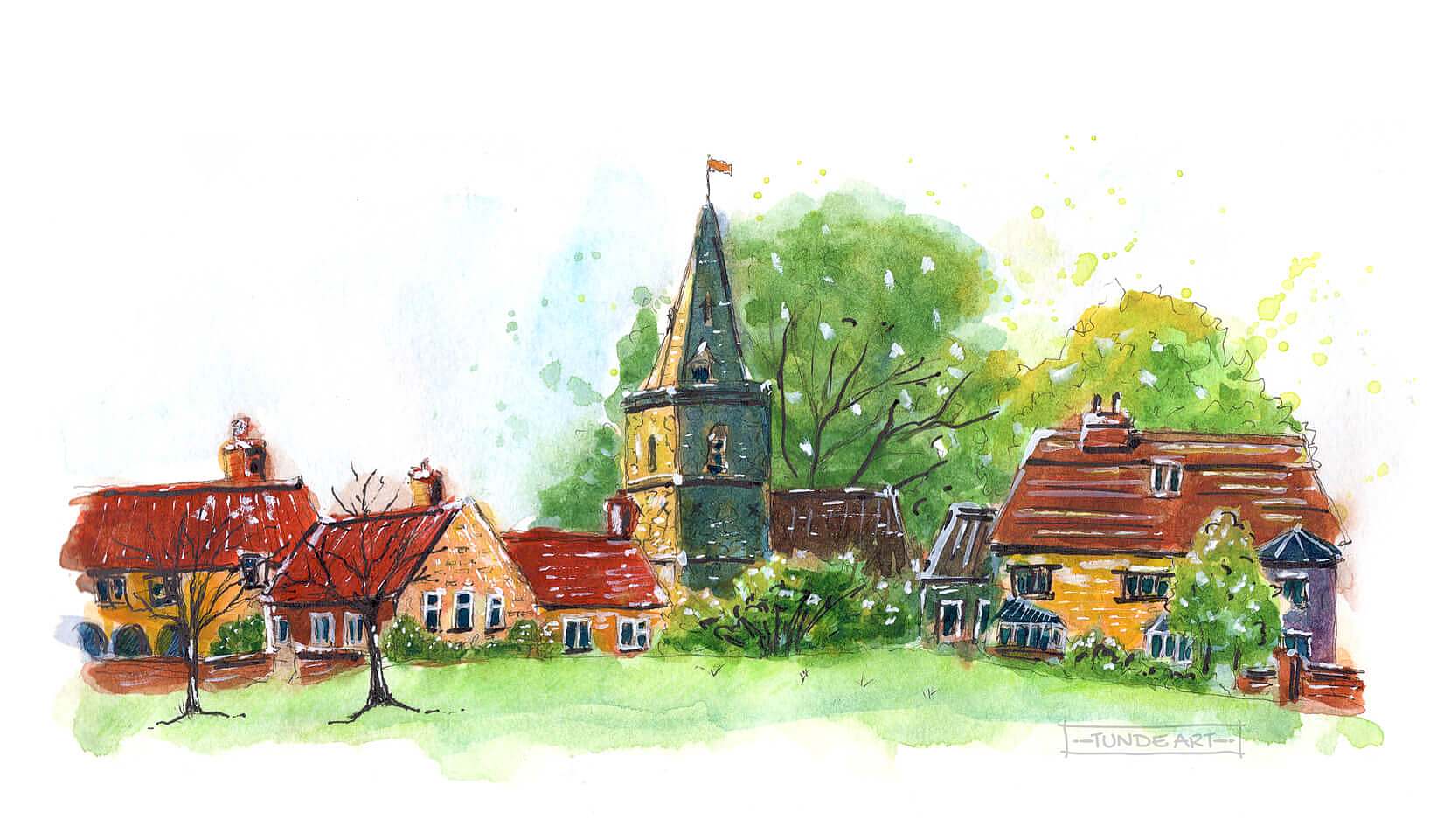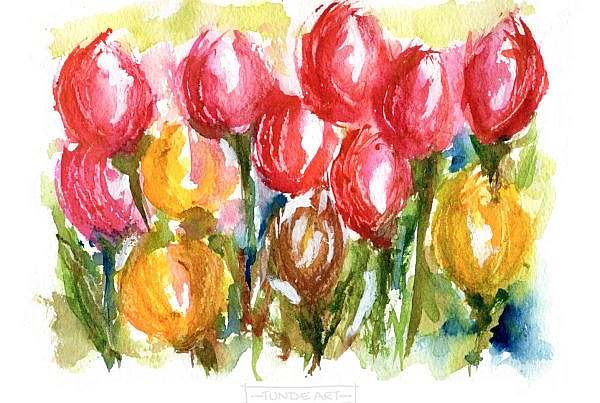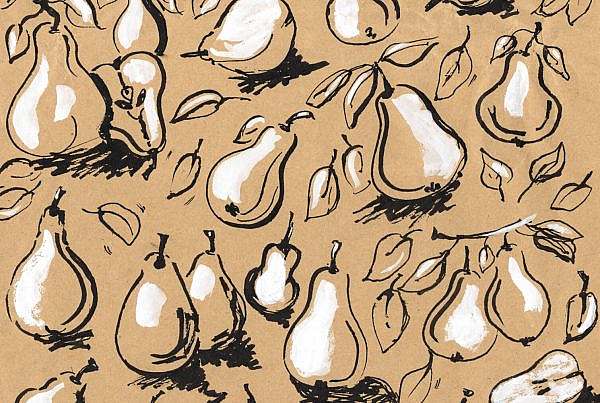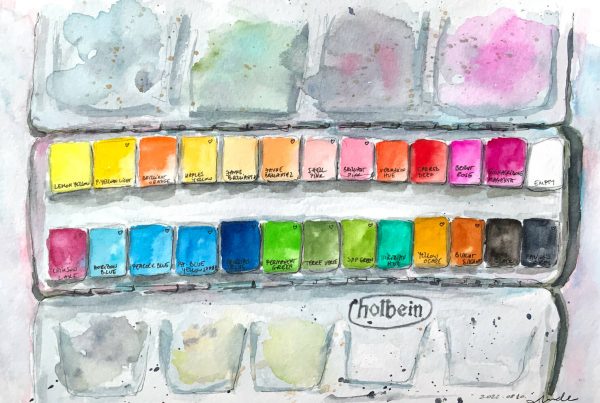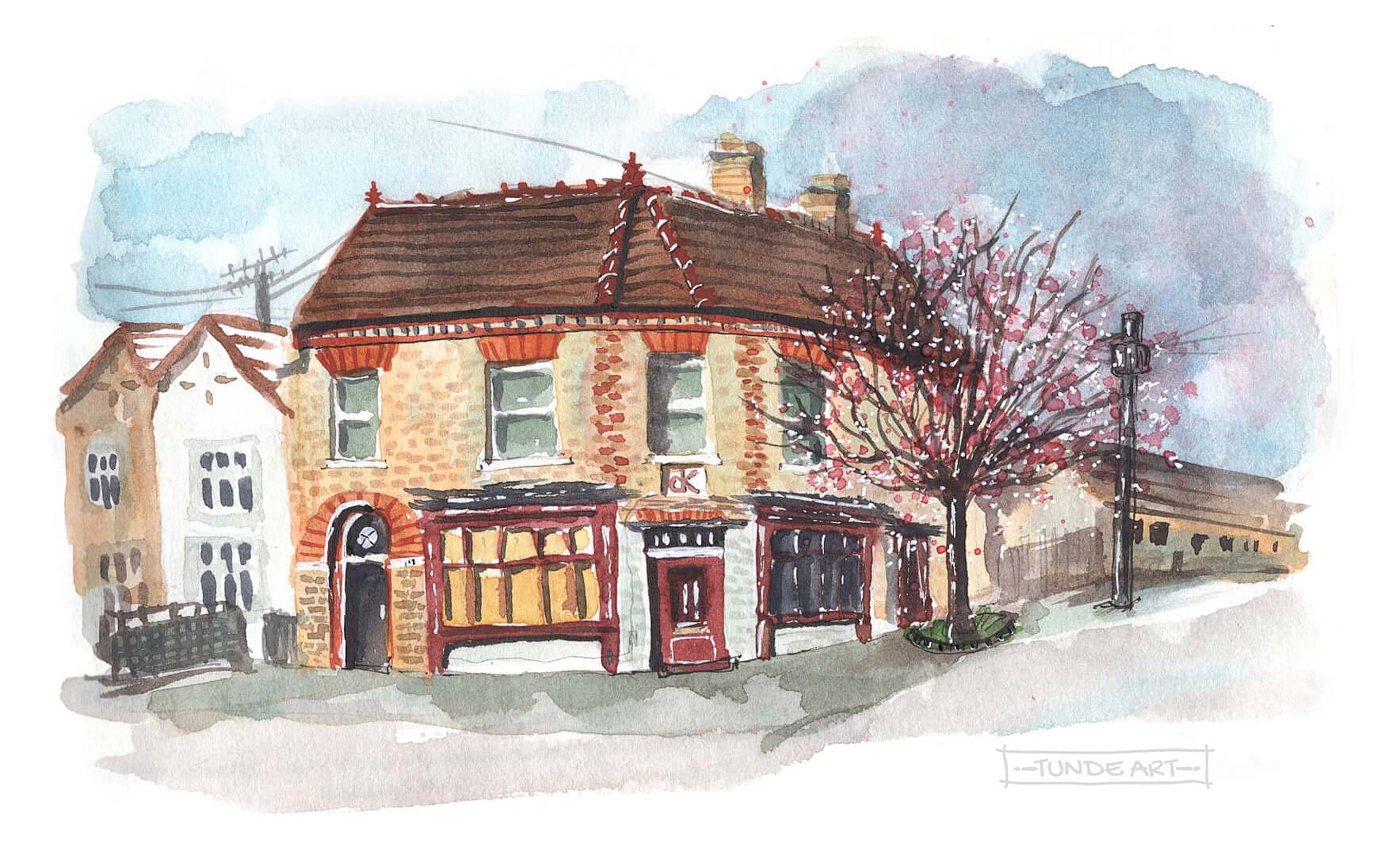
Architecture has always fascinated me. I’m lucky enough to live in one of England’s most architecturally rich cities, Cambridge. The iconic historic university buildings, the cobbled streets and the medieval churches attract a great number of tourists every year. Strolling in the city and observing its fine architectural details is always a joy. However, in this post, I would like to present another side of the city: the residential areas. They are no different from the historical part of the city: you can find many architectural styles, from old Tudor houses to modern apartment buildings. I like to take long walks to observe the local environment and take a closer look at family homes or interesting buildings that come my way. It’s interesting to see how the residents care (or not) for their property. There is so much to observe and analyse. I’m always fascinated by the unusual building styles or the little details that catch my eye. An old door, a distinctive colour, or a conspicuous decor element, all speak to me.
I like to draw the buildings which inspire me; most of my building portraits are family homes in Cambridge. Usually, I take pictures of the buildings and surroundings, and paint them later. Over the years, I took hundreds of photos which are waiting to be recreated as paintings one day. This was why I was over the moon when Barbara Luel posted her new course, where she teaches how to draw buildings without perspective rules. Perspective always gives me a headache when drawing buildings, so any tip or technique leading me to deal with it easier is always welcome. In her class, Barbara explains how we can change the way we look at the subjects we draw. She even mentions the work of Betty Edwards, which I was following years ago when I wanted to learn to draw realistically (not any more).
This class motivated me to dig deeper into my photo album about buildings and put what I learnt into practice. Barbara’s classes are always so inspiring that I cannot stop at one subject. She has something in her teaching style which makes me think, like how I can experiment and play more. I gave myself time to explore different drawing styles and tools. I discovered that if I draw only with brushes, I can loosen up my drawing. It helps me to go with the flow. Drawing with a pencil gives me more security because I can erase it later. I tried drawing with a ballpoint pen, but I’m not sure if I like the outcome. Also, I took the opportunity to experiment with different colouring techniques: using watercolour and colouring pencils.
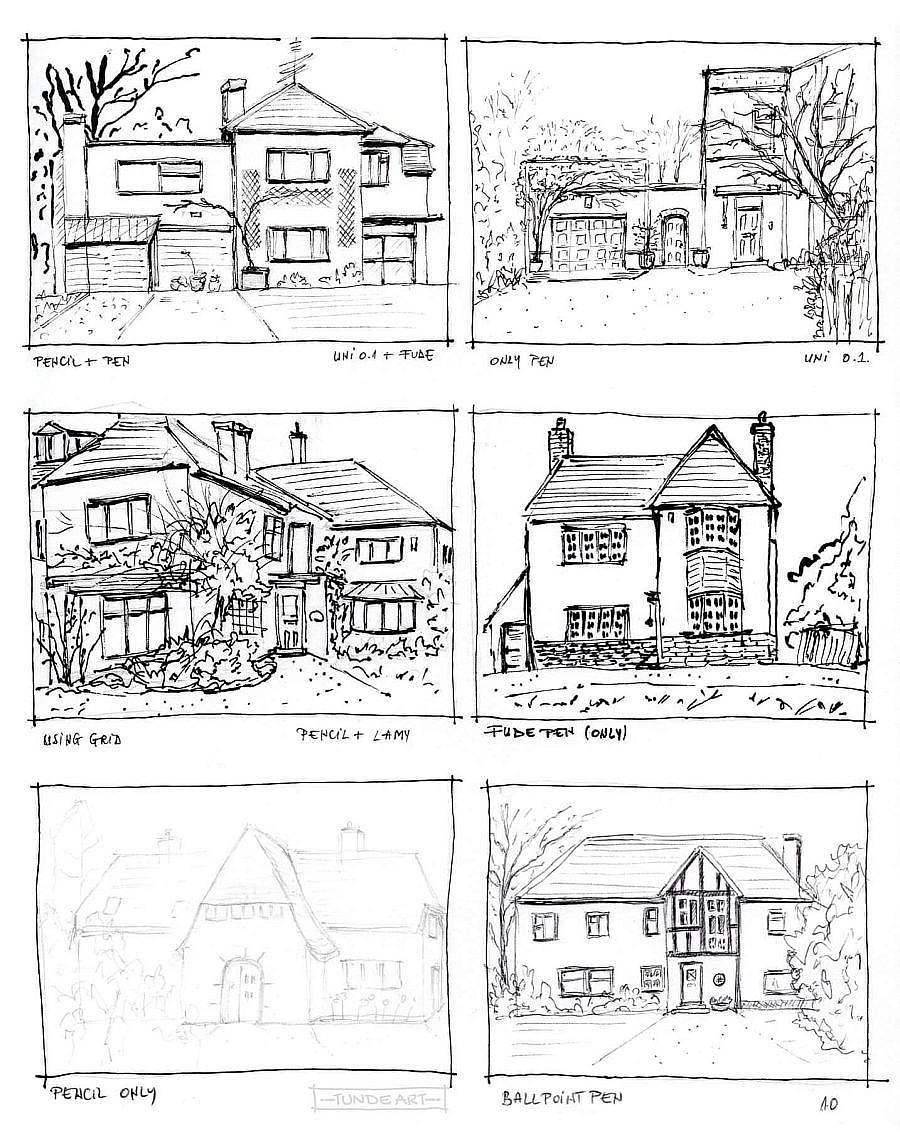
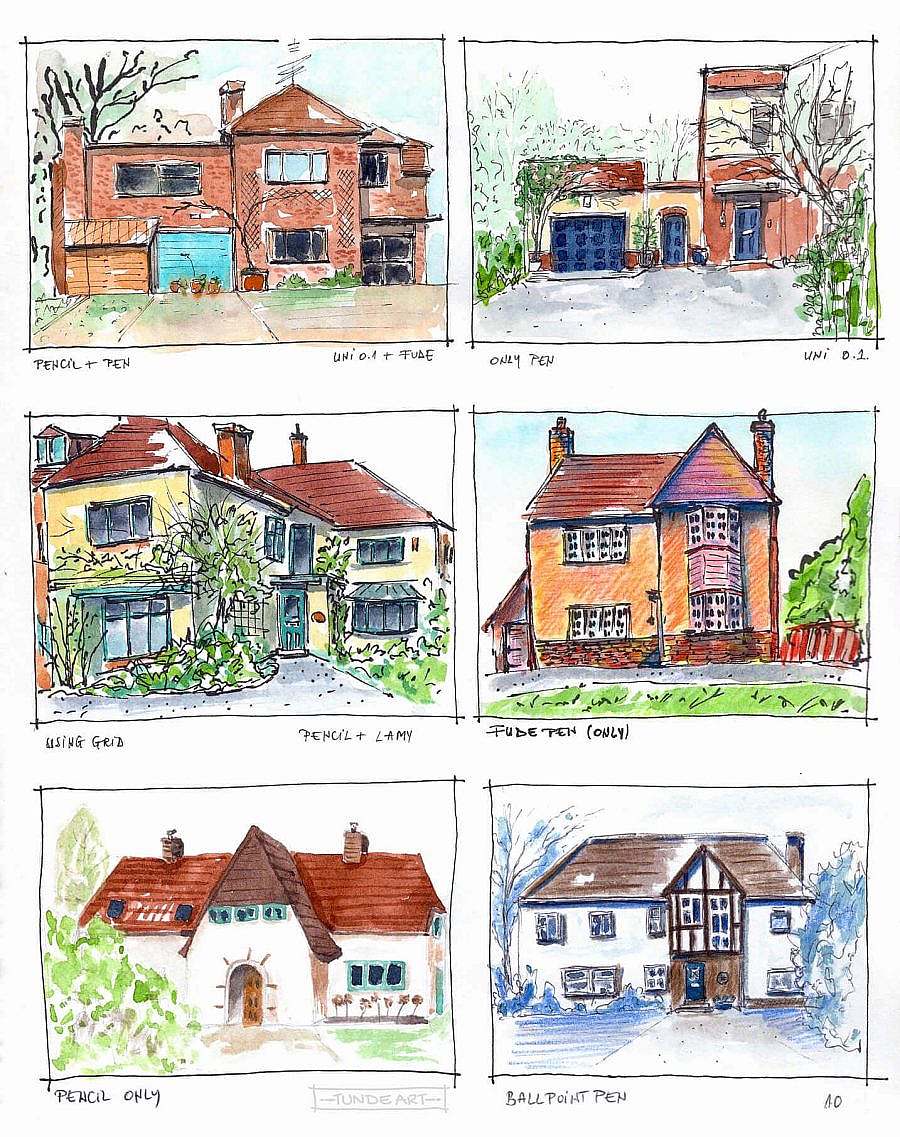
This was the first time I used a grid to draw a building. In the case of complex subjects, it is worth the time and effort. I downloaded an application on my phone, so I don’t need to print out the subject. The plan is to create and use a plastic grid in real-life situations in the future.
I started a new A4 sketchbook recently, which gives me a lot of freedom to experiment due to its size. When I began my artistic journey with drawing building portraits, I observed that I tend to stick to one drawing style, which worked for me. This is ok, but there is so much more to discover out there. Courses like Barbara’s give me new perspectives and push me to play more with different techniques and styles.


